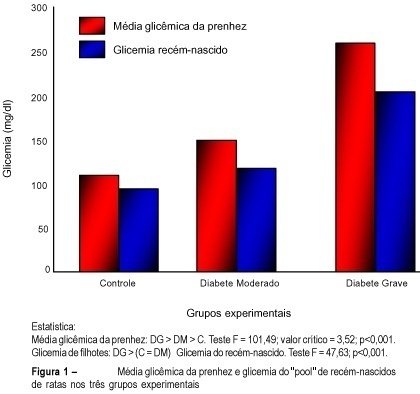Summary
Revista Brasileira de Ginecologia e Obstetrícia. 2001;23(1):9-14
DOI 10.1590/S0100-72032001000100002
Purpose: to evaluate the effects of maternal diabetes on the fetal lung phospholipid profiles of rats with moderate and severe diabetes measuring lecithin (L), sphingomyelin (S), phosphatidyl-glycerol (PG), phosphatidyl-inositol (PI), and the relationships between L/S and PG/PI. Methods: fifty-four mature Wistar rats were submitted to experimental diabetes and pregnancy¹. Diabetes was induced by alloxan (42 mg/kg of weight, iv) and three groups were formed: control; moderate diabetes (MD), with glycemia levels between 120 and 200 mg/dl, and severe diabetes (SD), with glycemia levels higher than 200 mg/dl. On the 21st day, cesarian section was performed, and the fetal lungs were macerated and pooled. The phospholipids were measured by unidirectional thin-layer chromatography. Results: 1) the fetal lungs of the rats with moderate diabetes showed higher weight (0.159 g) and lower concentration of PG (3.0 µg/ml) and PI (3.4 µg/ml) than the controls, and the same relationship between L/S (2.2) and PG/PI (2.0). The fetal lungs of the rats with severe diabetes showed lower weight (0.145 g), the same values of L/S (1.9) and PG/PI (2.1), and lower PI (5.1 µg/ml) value than the controls. Conclusions: 1) the pulmonary maturity retardation in the pups of rats with moderate diabetes is explained by the higher pulmonary weight associated with lower concentration of PG and PI; 2) the pulmonary maturity acceleration in the pups of rats with severe diabetes is explained by the lower pulmonary weight associated with the same concentration of PG and PI.
